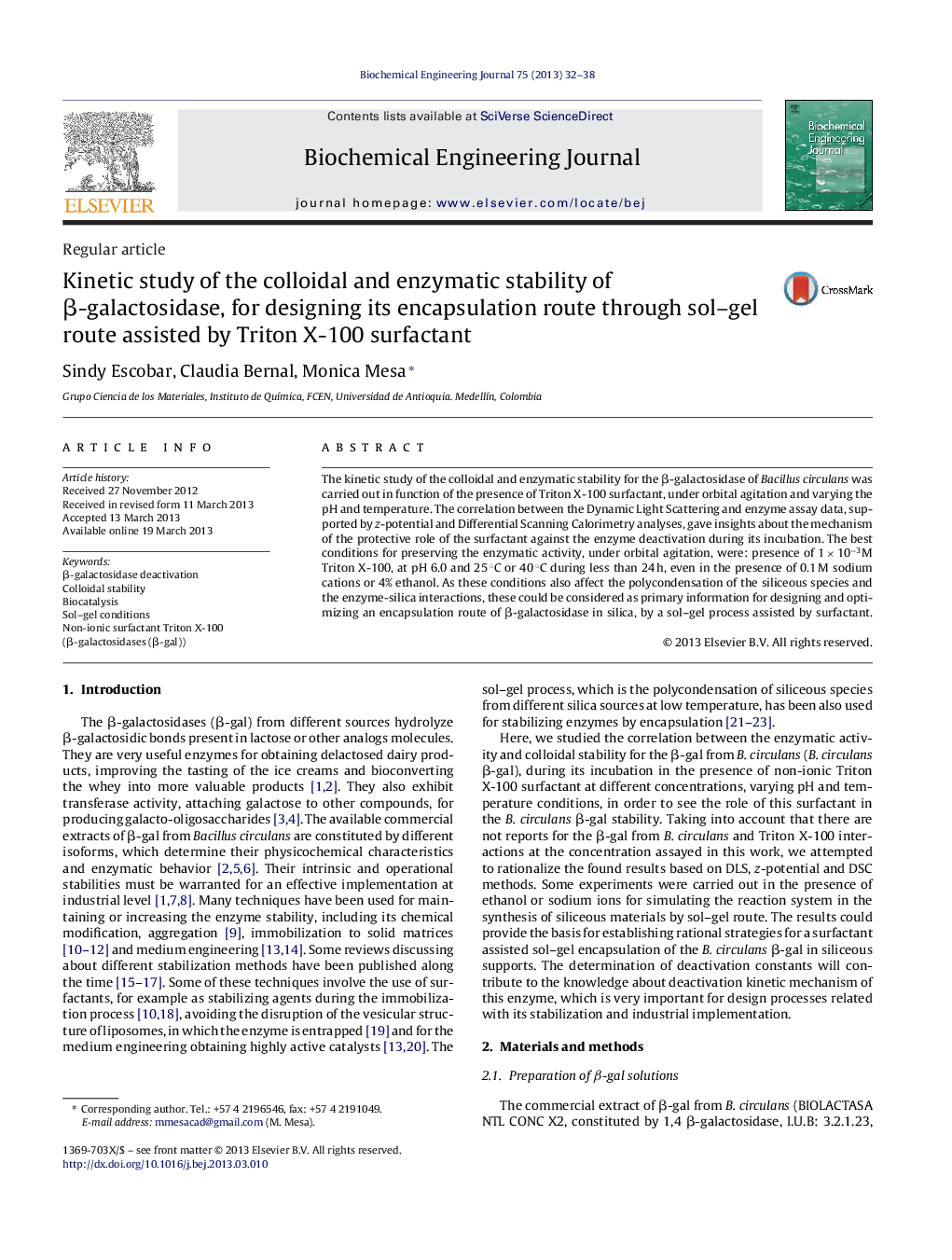| Article ID | Journal | Published Year | Pages | File Type |
|---|---|---|---|---|
| 3304 | Biochemical Engineering Journal | 2013 | 7 Pages |
•DLS and zeta-potential data may help to explain the β-galactosidase deactivation.•Triton X-100 at 1 × 10–3 M concentration delays the β-galactosidase deactivation.•Preliminary conditions for sol–gel encapsulation of β-galactosidase are suggested.
The kinetic study of the colloidal and enzymatic stability for the β-galactosidase of Bacillus circulans was carried out in function of the presence of Triton X-100 surfactant, under orbital agitation and varying the pH and temperature. The correlation between the Dynamic Light Scattering and enzyme assay data, supported by z-potential and Differential Scanning Calorimetry analyses, gave insights about the mechanism of the protective role of the surfactant against the enzyme deactivation during its incubation. The best conditions for preserving the enzymatic activity, under orbital agitation, were: presence of 1 × 10−3M Triton X-100, at pH 6.0 and 25 °C or 40 °C during less than 24 h, even in the presence of 0.1 M sodium cations or 4% ethanol. As these conditions also affect the polycondensation of the siliceous species and the enzyme-silica interactions, these could be considered as primary information for designing and optimizing an encapsulation route of β-galactosidase in silica, by a sol–gel process assisted by surfactant.
Graphical abstractFigure optionsDownload full-size imageDownload as PowerPoint slide
